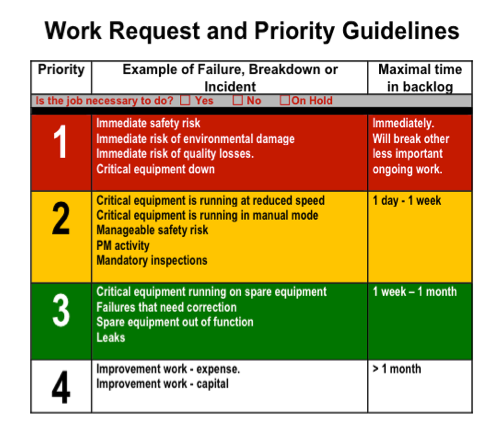5 Rules to Build a Partnership
Torbjörn Idhammar, President & CEO IDCON INC.
Plant professionals (and consultants) often talk about the importance of a maintenance, operations, and engineering partnership.
In my experience, the discussions commonly center on very general terms such as better communication and understanding. Those issues are important…but what you need are precise rules and actions to drive that partnership long term.
When IDCON works on reliability improvement projects, we usually begin with operations and maintenance leadership. We meet with them to lay down the law and agree upon the work process and the rules of the partnership.
Once everyone agrees, we create a “rulebook” that all employees can keep in their pocket. I want to share some of the rules I think help drive the partnership behavior in an organization. This article shares 5 of my favorite “rules” to build a sustainable partnership.
5 Rules to Building a Partnership
Rule 1: “Operations, Maintenance and Engineering are Joint Partners and Together form a Production Team.
Maintenance is responsible for equipment reliability, operations for process reliability, and engineering helps both with technical expertise.”
This means that we stay away from having maintenance as a supplier to operations. A customer-supplier relationship is not a partnership.
Why Maintenance Shouldn’t be a Customer of Operations
The customer-supplier setup doesn’t work well because if operations is the customer, they will always get what they request. They are in effect managing maintenance. I have seldom, if ever, seen long-term success when operations is in charge of maintenance.
Can Operations Manage Maintenance?
I say “no”. The reason is that an operations manager can’t be an both an expert in maintenance management and the production process. And if a person is just such an expert, his or her successor probably won’t be.
On the other hand, if there is a customer-supplier relationship and maintenance oversees its own budget, it’s even more of a mess; operations can go to maintenance and ask for anything they want and not have to pay for it. Agree that it should be an equal partnership with a joint goal of improved production. This can be measured by overall production efficiency on bottlenecks.
Watch this video to learn more
Rule 2: Agree on the Criteria for each Work Request Priority Codes
Let’s assume there are prioritization codes in your CMMS system. Each code should have a set of criteria and a time limit.
The criteria is very important because it guides and holds the requesters to a set of rules.
For example, an emergency (Priority 1) work order could be any work that is an immediate safety, environmental or quality issue, or that critical equipment is down. You must agree that the maintenance schedule will not be broken If the criteria aren’t met.
A priority system with corresponding criteria and time limits makes maintenance more productive and builds a partnership due to better communication. The guideline below is a simple but effective 4 code system.

Rule 3: Cut-off Times are Agreed-Upon for the Following:
- The start day and time of a shutdown, outage, or smaller area shutdown
- Adding jobs to the weekly and daily schedule
- Adding jobs to a shutdown/turnaround
It may not be possible to follow the rules 100 percent, but there must be an agreed-upon guideline with the intention to follow them.
For example, it may be OK to add on a job to a shutdown seven days before the shutdown. This job is a break-in job and is only approved by the plant manager. It can’t be added just because we forgot to mention it during the worklist review phase. Or the planning and scheduling phases.
This set of rules will force operations and maintenance to communicate better. Execution of work will improve due to fewer last-minute changes.
Rule 4: Have a Formal, Joint Approval Point for Work Requests
Requested work should have a formal evaluation point. This evaluation decides if the work is done or not.
Maintenance and operations should screen work before getting together. Divide work into two buckets – “routine” and “improvement”. Routine Maintenance jobs must be done. A valid maintenance job can never be avoided. Improvements can be questioned.
It’s easy to forget that point can control the budget. When each work request is evaluated, you could free up to 20 percent of craftspeople’s time.
The practice builds the partnership. Why? Because the work we decide to do will typically is completed in a timely manner, and unnecessary work will less likely be requested. Trust develops.
A role you should consider at your plant is an Operations Maintenance Coordinator.
Rule 5: Root Cause Problem Elimination Investigations are a Joint Effort
Equipment and process problems involve both maintenance and operations representatives to assist in the investigation and learn about each other’s fields.
A problem seldom has one solution pointing to only operations, maintenance, or engineering. It’s more commonly a combination. Recognizing that fact builds trust and communication.
These 5 rules have been adopted by our clients around the globe. They are a great starting point to build a sustainable partnership at your plant. Contact me to discuss how IDCON can help you build your plant’s partnerships.

Torbjörn Idhammar
Torbjörn Idhammar is the president and CEO of IDCON INC., a Reliability and Maintenance Management Consulting Firm. Tor’s responsibilities include training IDCON consultants, product development, sales, and marketing. He gives advice to IDCON’s multi-site and international clients to ensure outcomes and deliverables are met.
Related Articles

How to Fix the 70/30 Phenomenon

Zen and the Art of Managing Maintenance

Why do maintenance improvement initiatives fail to deliver? (Hedgehog or Fox?)

Why Maintenance Improvement Efforts Fail

TPM and RCM: Whirled Class

Where Do Maintenance Professionals Come From?




